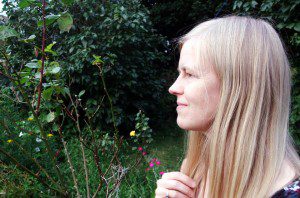The first copy of The Third Alternative (as it then was) that I ever bought was Issue 19, Spring 1999. I was in the Oxford Circus branch of Borders (now sadly defunct), looking for magazines of new horror fiction, not knowing if such a thing even existed. I picked up TTA#19 not really knowing what it was, only that – and of this I felt certain – it was for me. I read that issue three times from cover to cover. I still remember the stories in it, how incredible it felt to discover them, the disorienting sense of relief, that other people were into – were writing – the same stuff as I was.
It really did feel as if I’d stumbled into a strange house – only to discover that I’d actually entered my own home by an unknown route.
There’s no equivalent of Black Static in the literary mainstream. That sense of community, of new writers and new readers discovering a shared set of literary interests, of building that aesthetic, advancing it and inhabiting it together, is almost entirely absent, and for a young or new or developing writer I hate to imagine how lonely that must feel. Almost from the moment I began to take myself seriously as a writer, there was this thing to tap into, an ambience of engagement and enthusiasm that for me was a revelation then and has continued to fire and inspire me until this present moment and into tomorrow. I would not be the writer I am developing into without TTA Press, period. The vital importance of Black Static to my writing life cannot be overstated.
I also think it’s worth commenting upon an aspect of Black Static that has not been mentioned perhaps as often as it should be, and that is the active and supportive role the magazine has played in encouraging and promoting the work of women horror writers. When I first picked up Issue 19 of The Third Alternative, I was immediately struck by the quality of a story entitled ‘Different Angels’ by Lynda Rucker. From that first encounter with Lynda’s fiction, I began to experience a frisson of pleasurable anticipation each time I opened an issue of the magazine with her name on the cover, and was particularly delighted when it was recently announced that Lynda would be writing a regular column for Black Static as of Issue 34. In the years since first discovering TTA I’ve been thrilled to see many new, exciting voices emerge through its pages – Karen Fishler, Carole Johnstone, Alison Littlewood, Rosanne Rabinowitz, Maura McHugh, M. K. Hobson, and most recently VH Leslie to name just a few. Black Static’s editor Andy Cox has done so much for so many. His willingness to go for broke, to seek originality and excellence, boldness and feeling in the fiction he publishes, to be inclusive in his search, uninhibited by the dated and regressive attitudes that the horror genre has sometimes been accused of – this attitude deserves to be commended at every opportunity.
NINA ALLAN
Black Static Contributor and author of The Silver Wind
If you enjoyed this article and want to read Black Static Magazine, please consider clicking through to our Amazon Affiliate links and making a purchase today. If you do you’ll help keep the This Is Horror ship afloat with some very welcome remuneration.











1 comment
Agreed. I had one of my early stories published in TTA 4 or 5 (it was a long time ago!) and I’ve always felt that Andy Cox has nothing but sincere encouragement both for new and female writers. Incidentally, a few years back there was going to be an issue of Black Static entirely devoted to female writers, but it fell through. It would’ve been interesting to see how it was recieved, but at the same time there are plenty of women being published in the regular issues of the magazine.